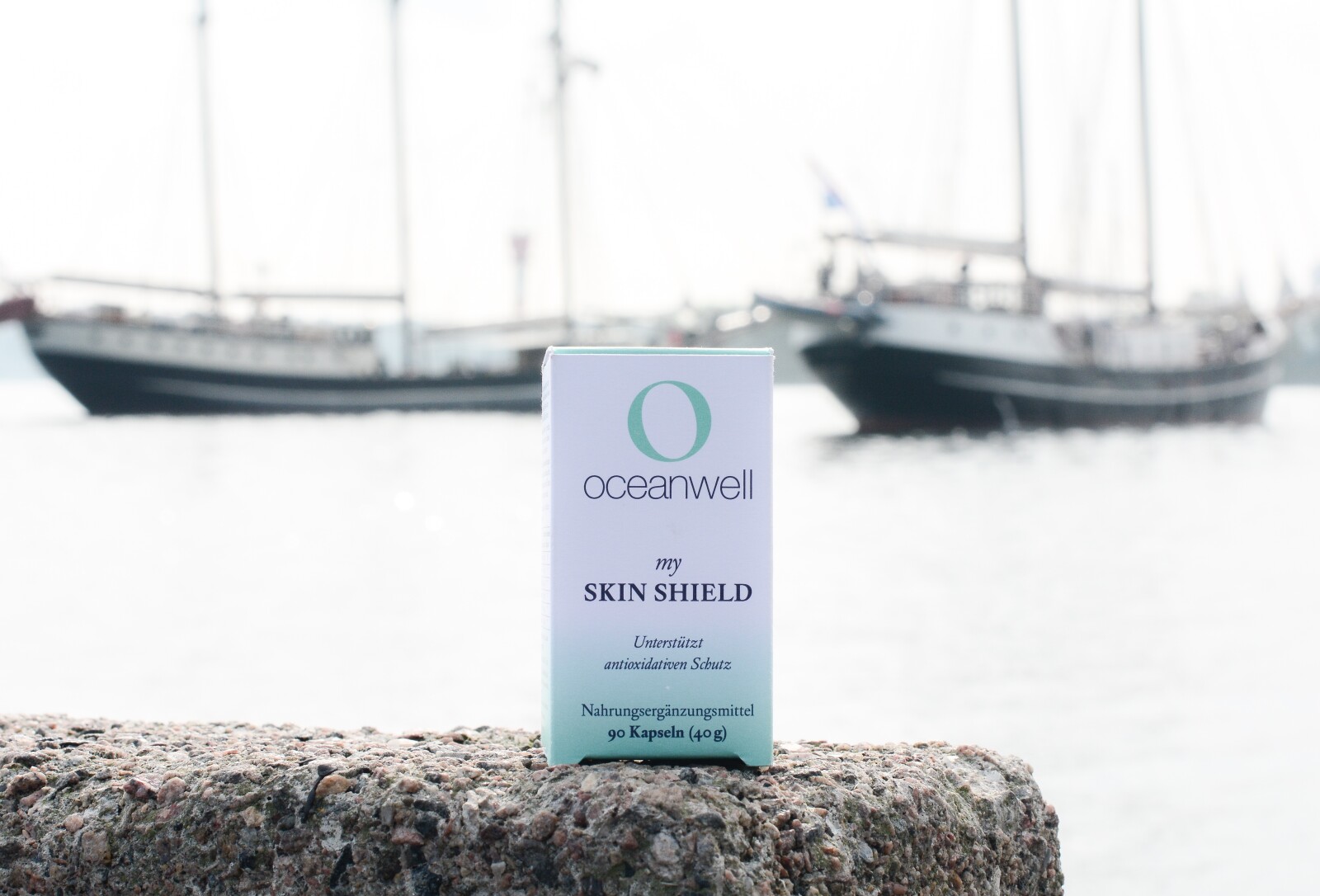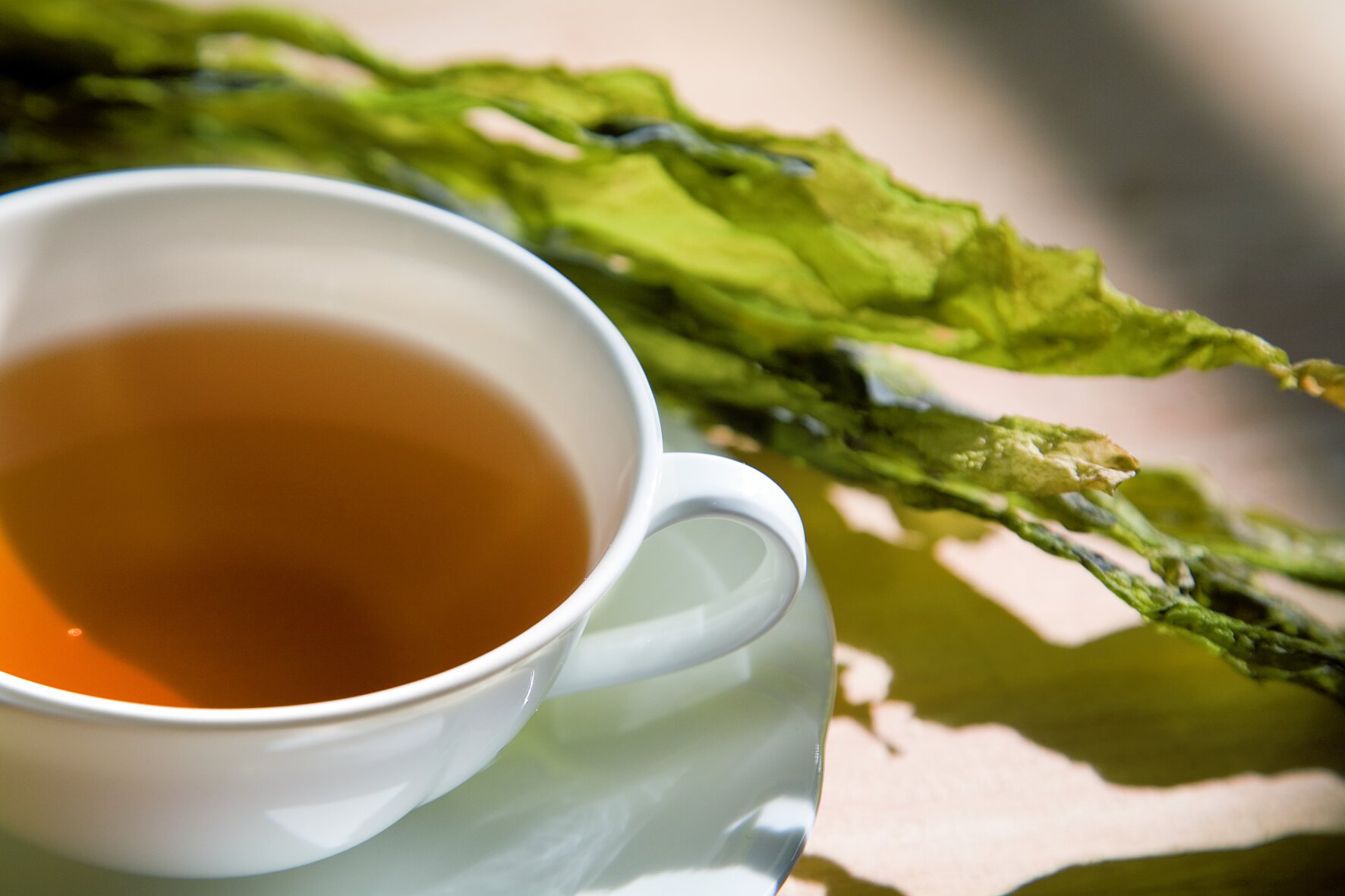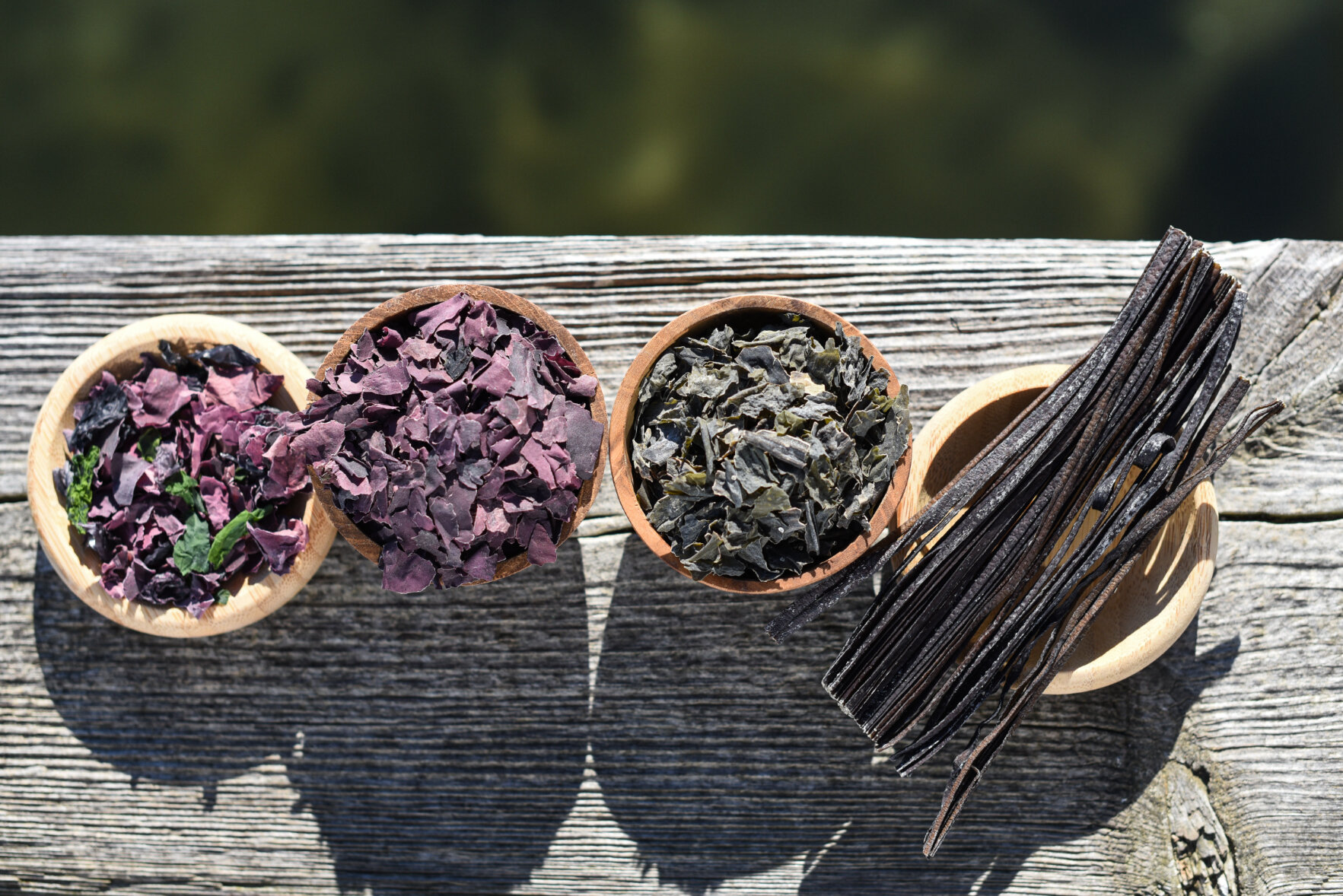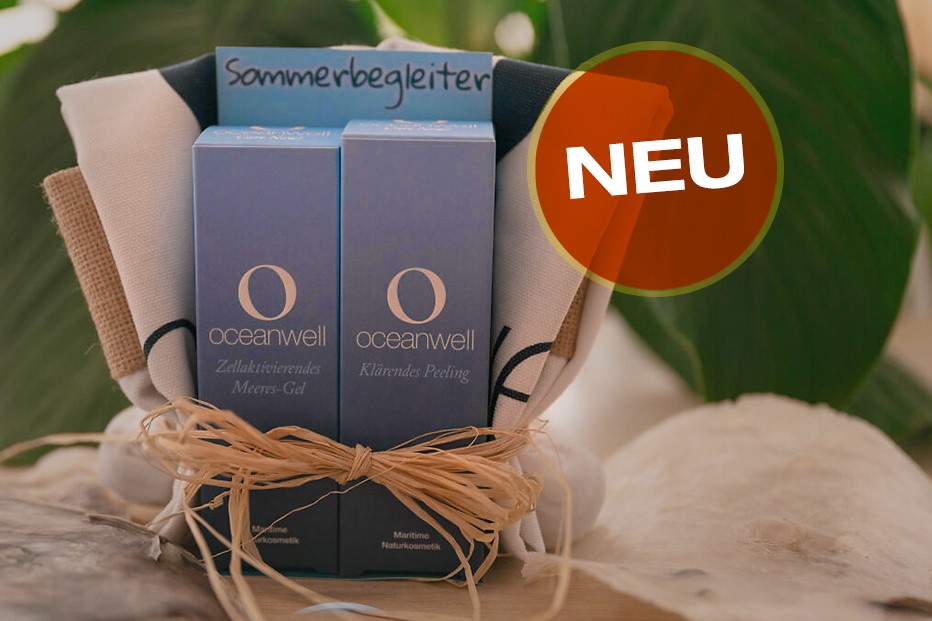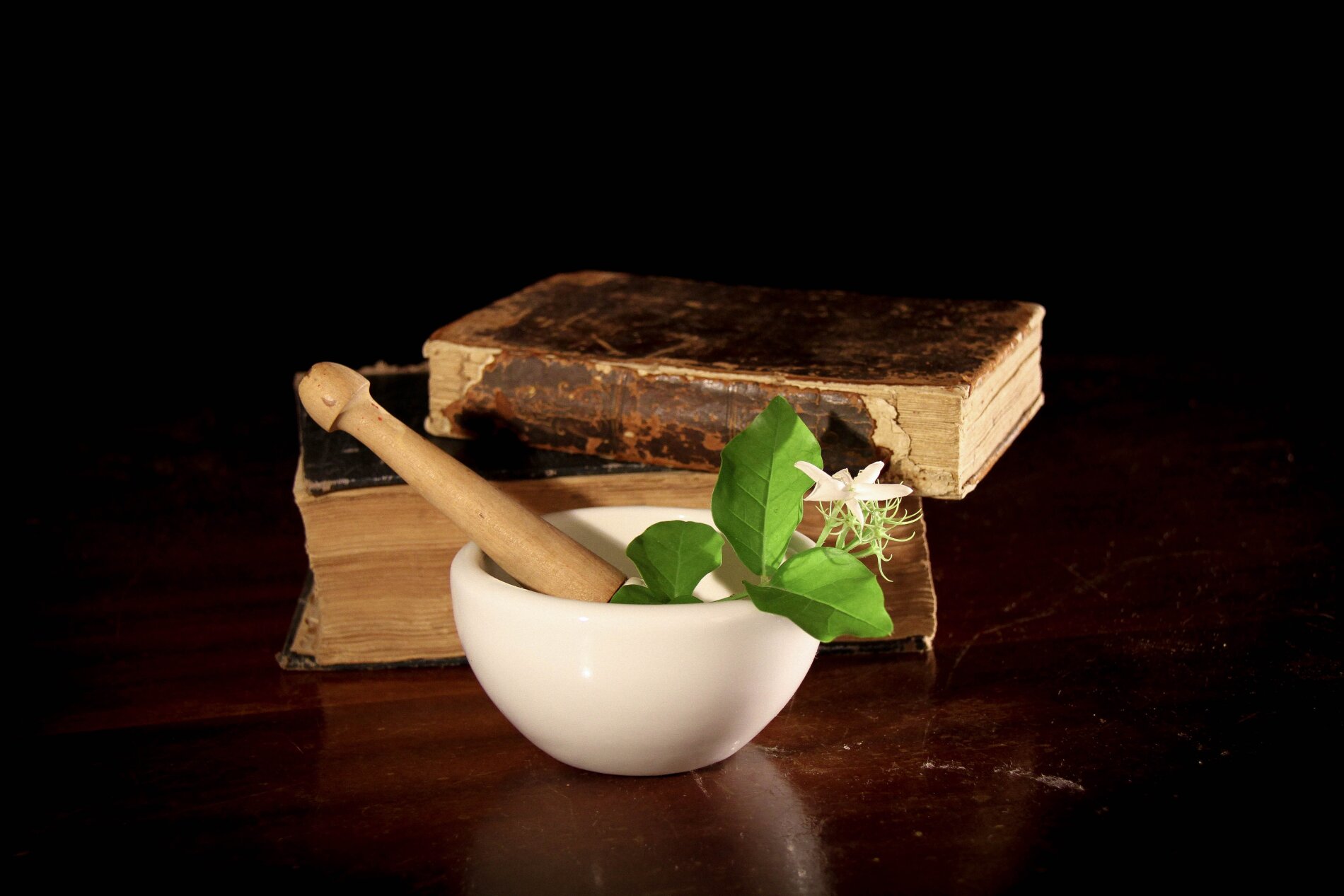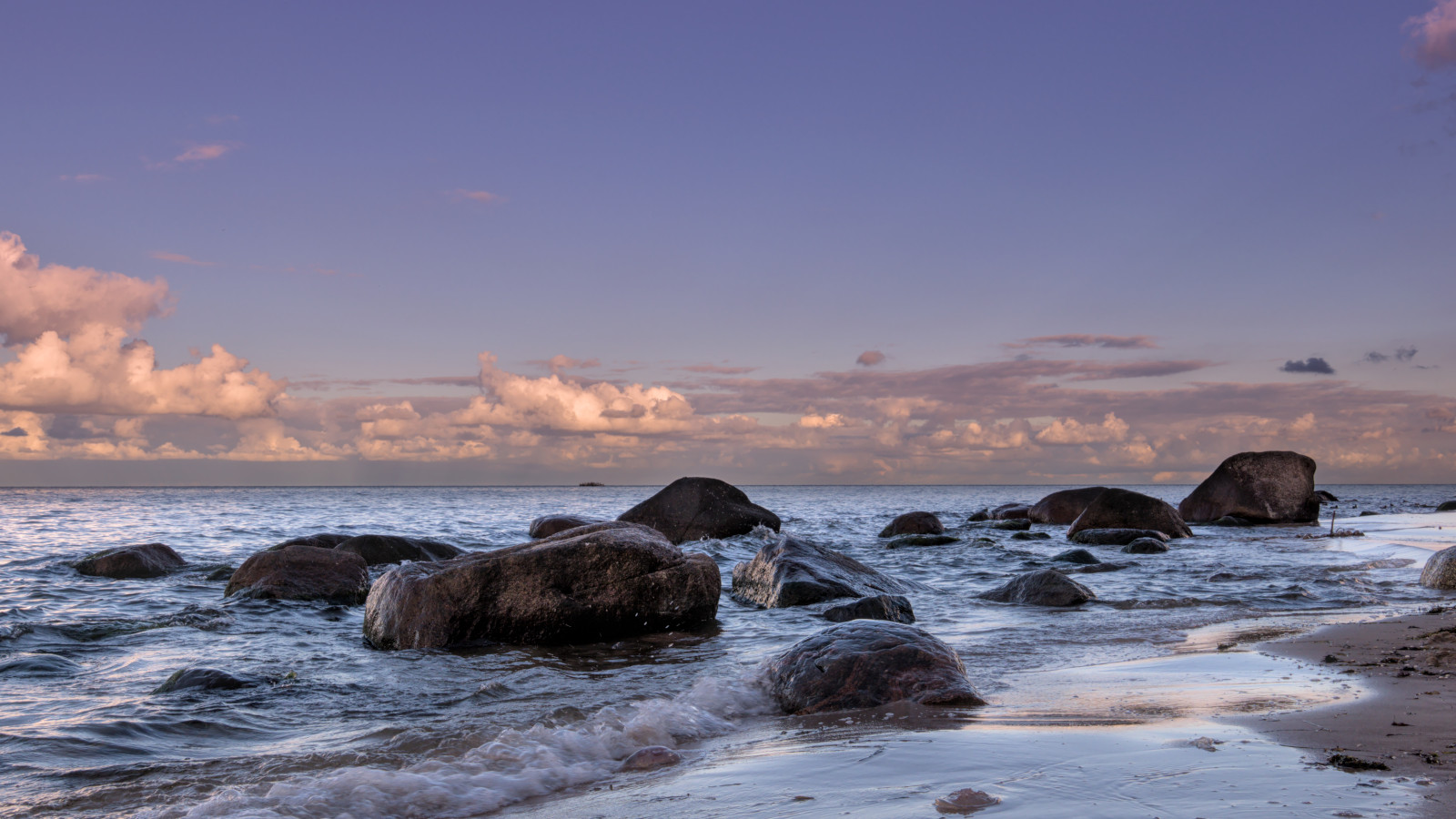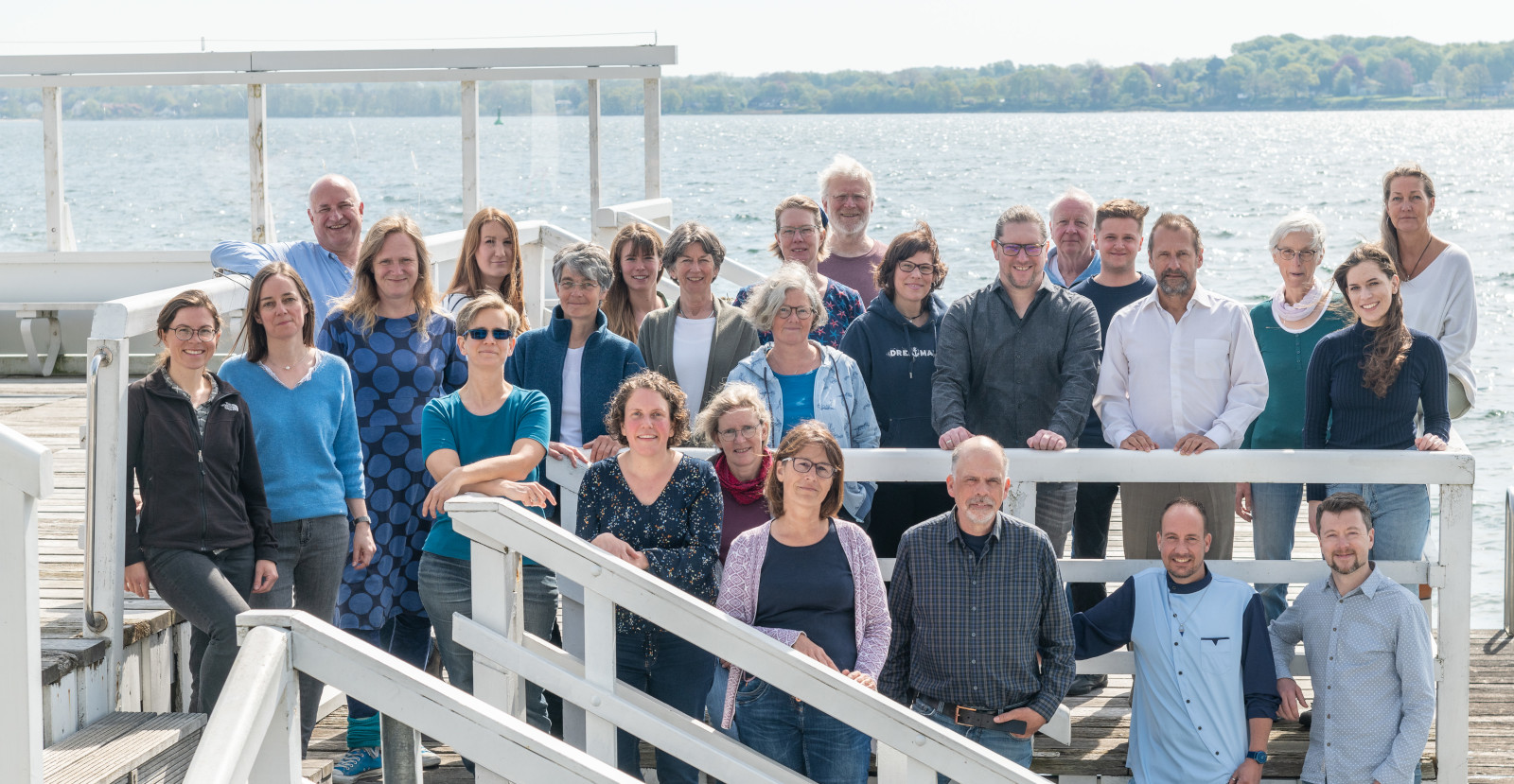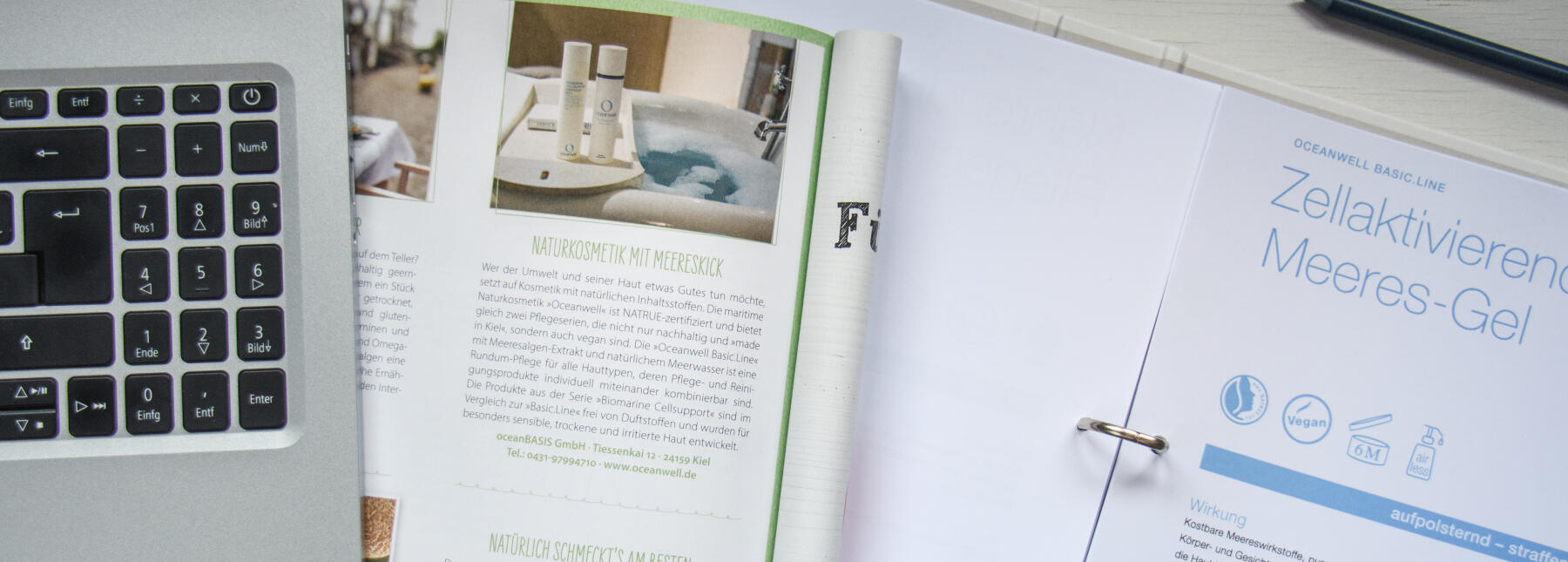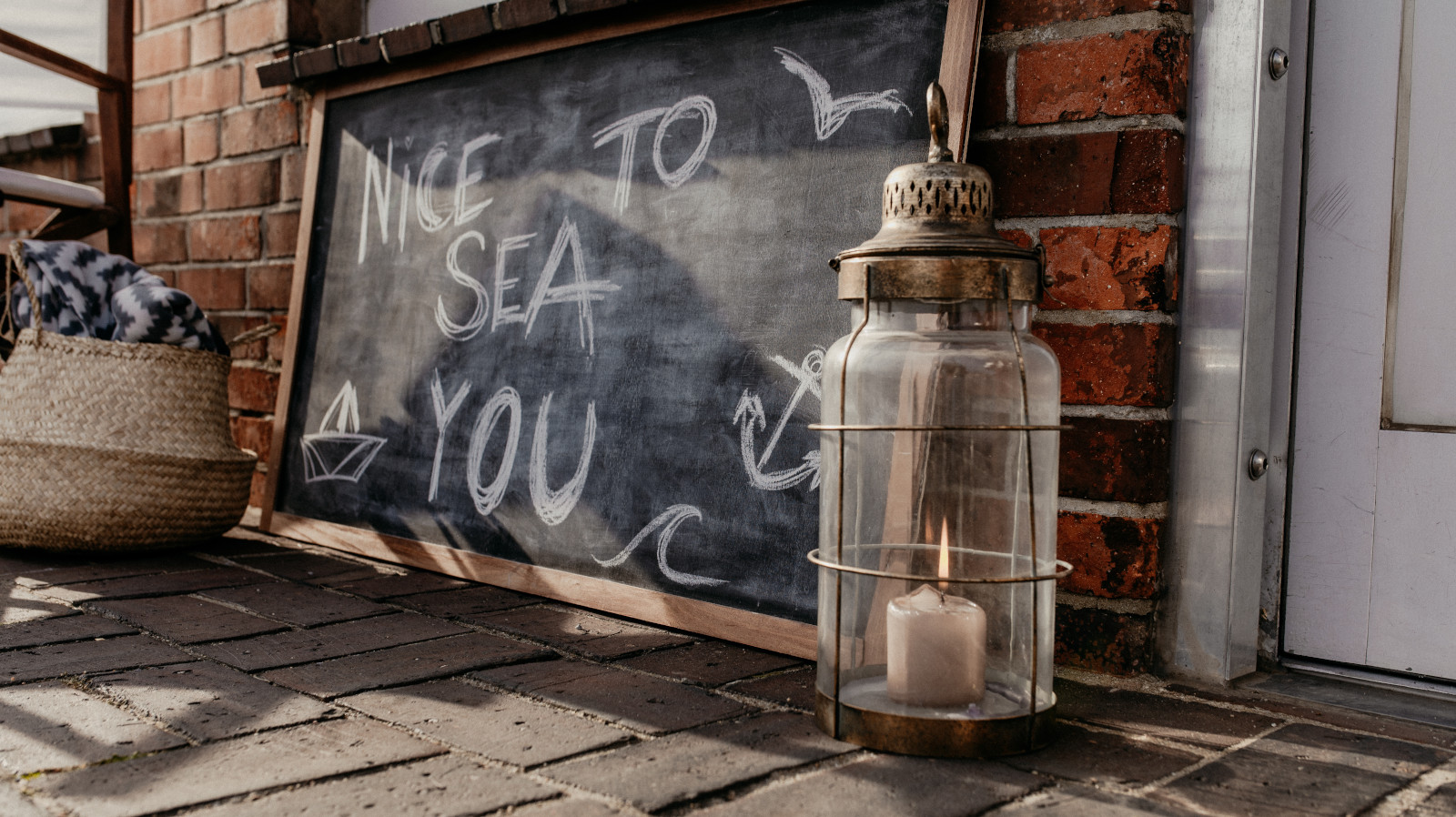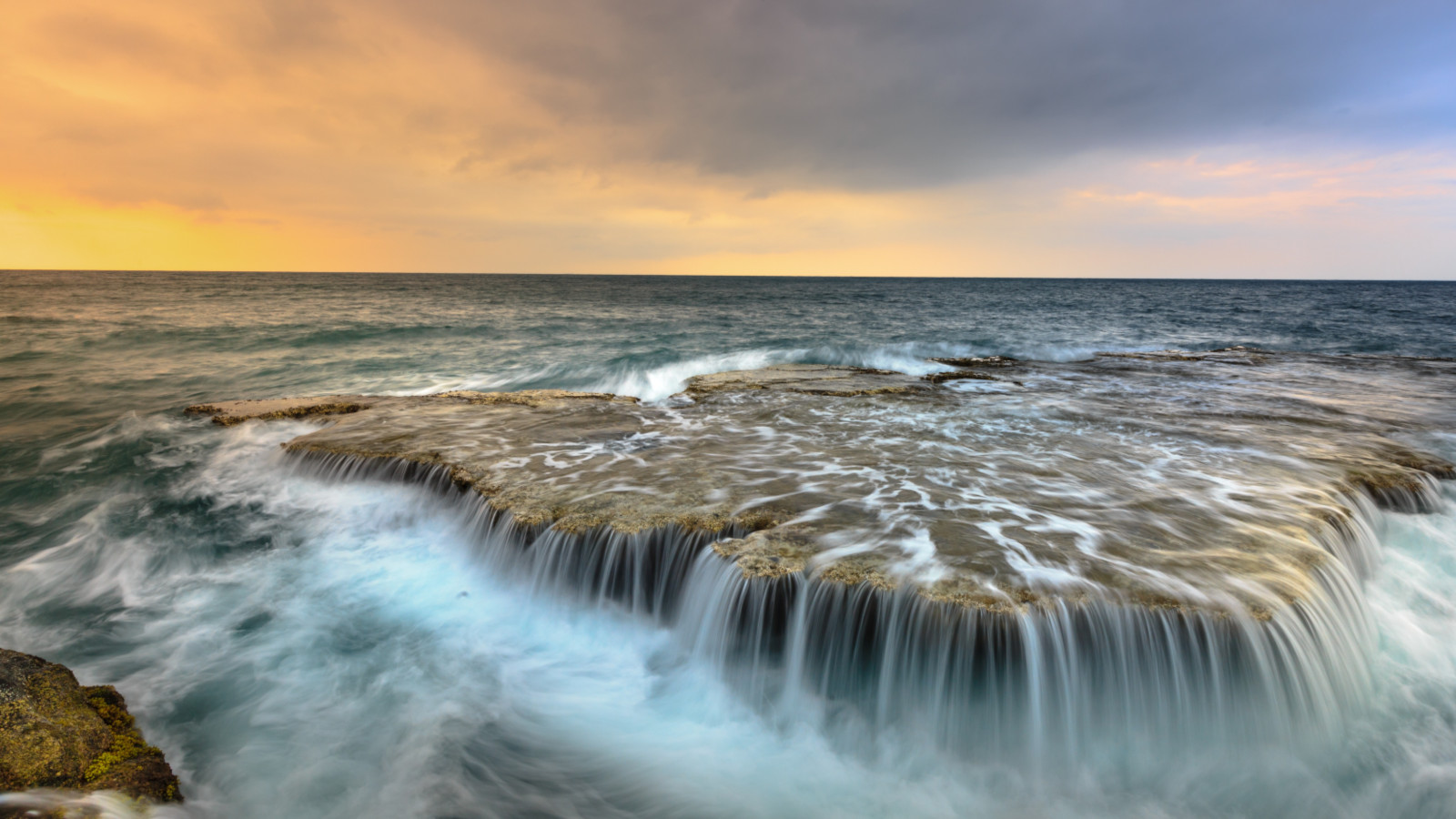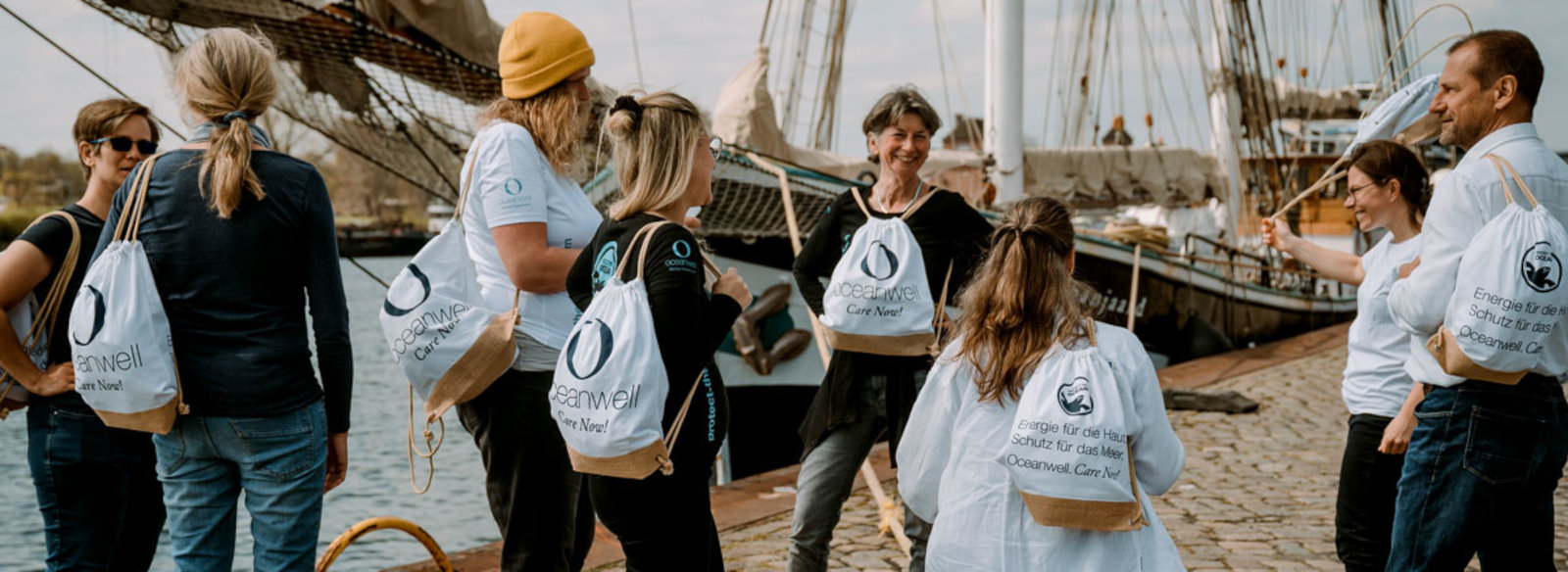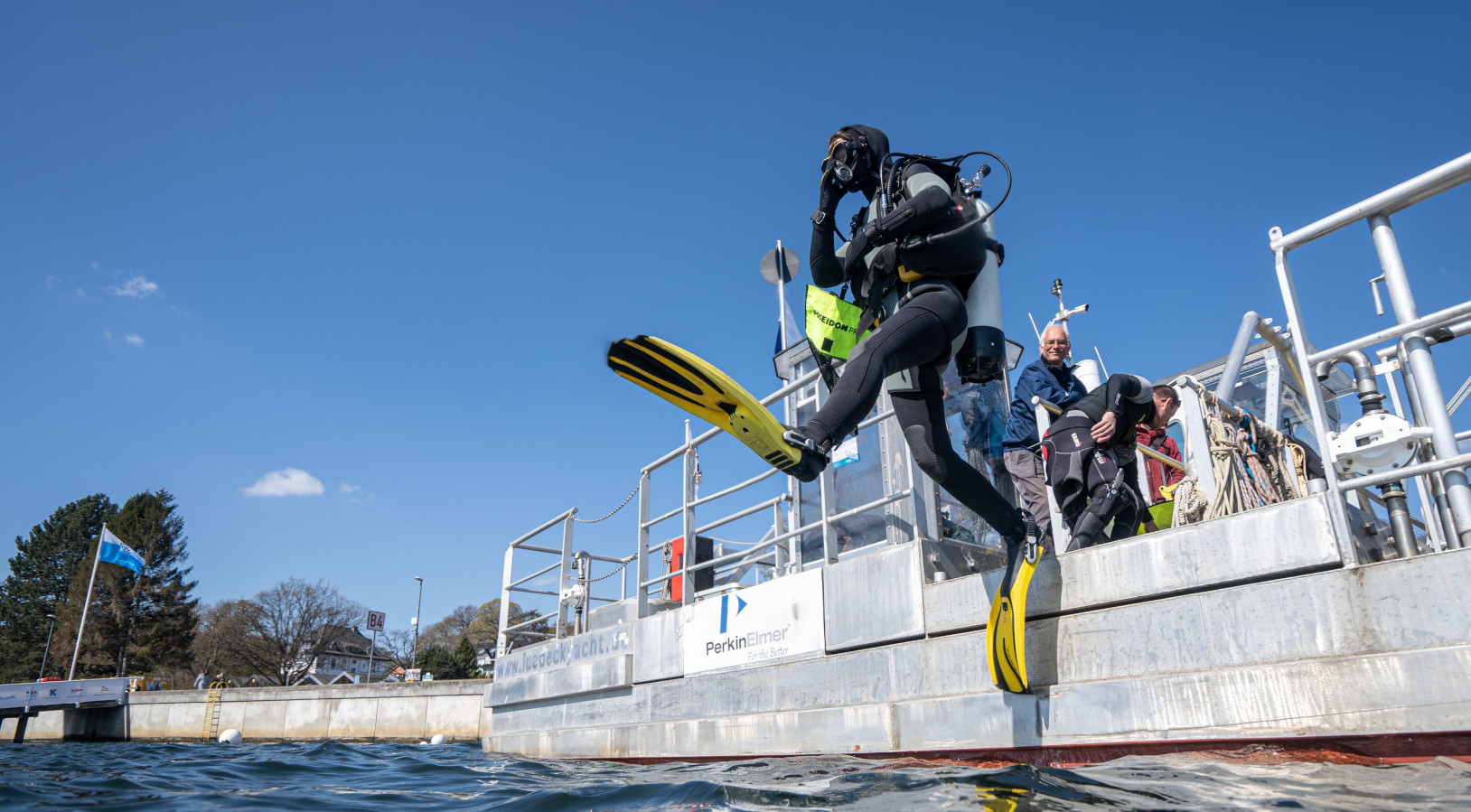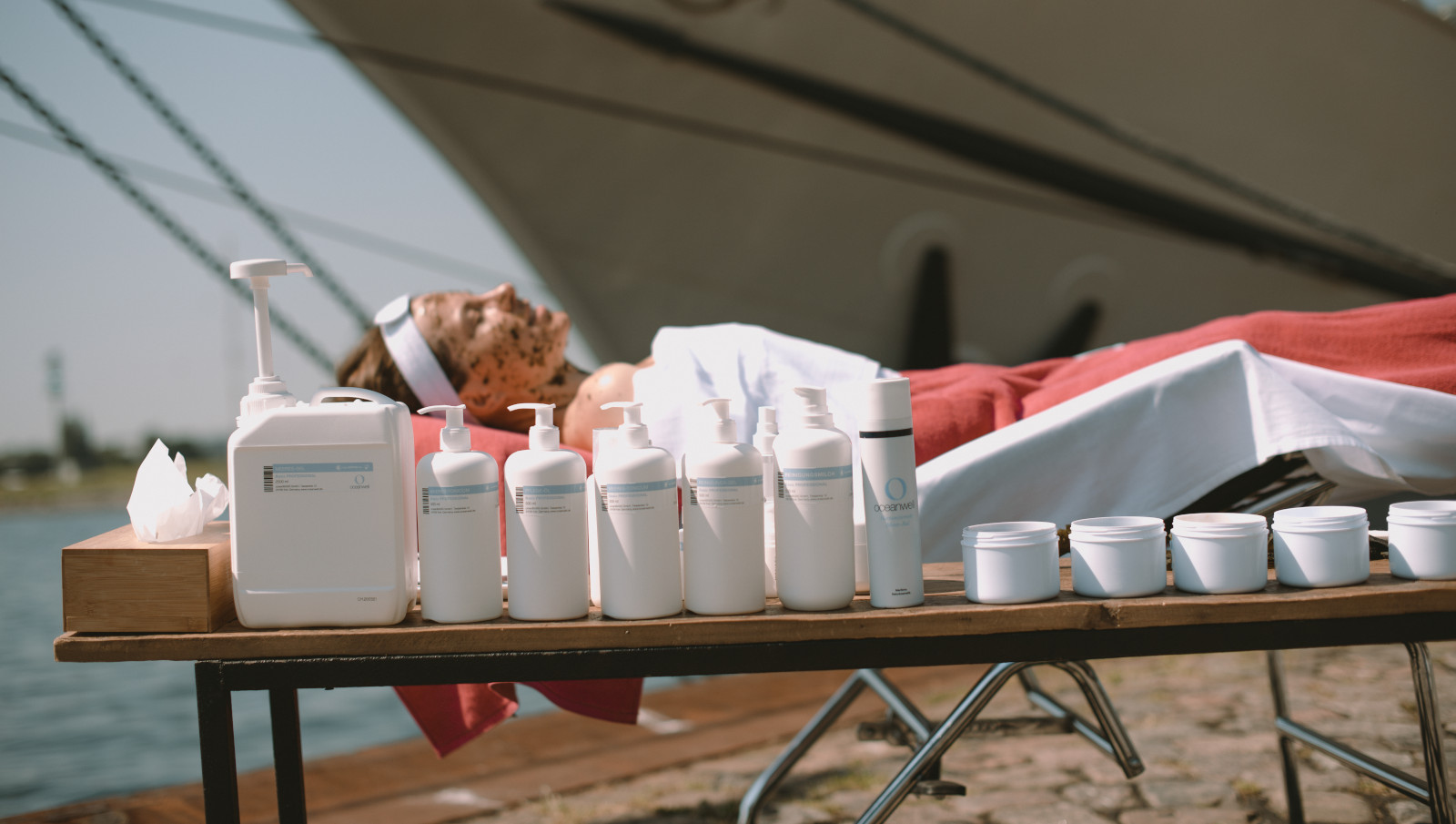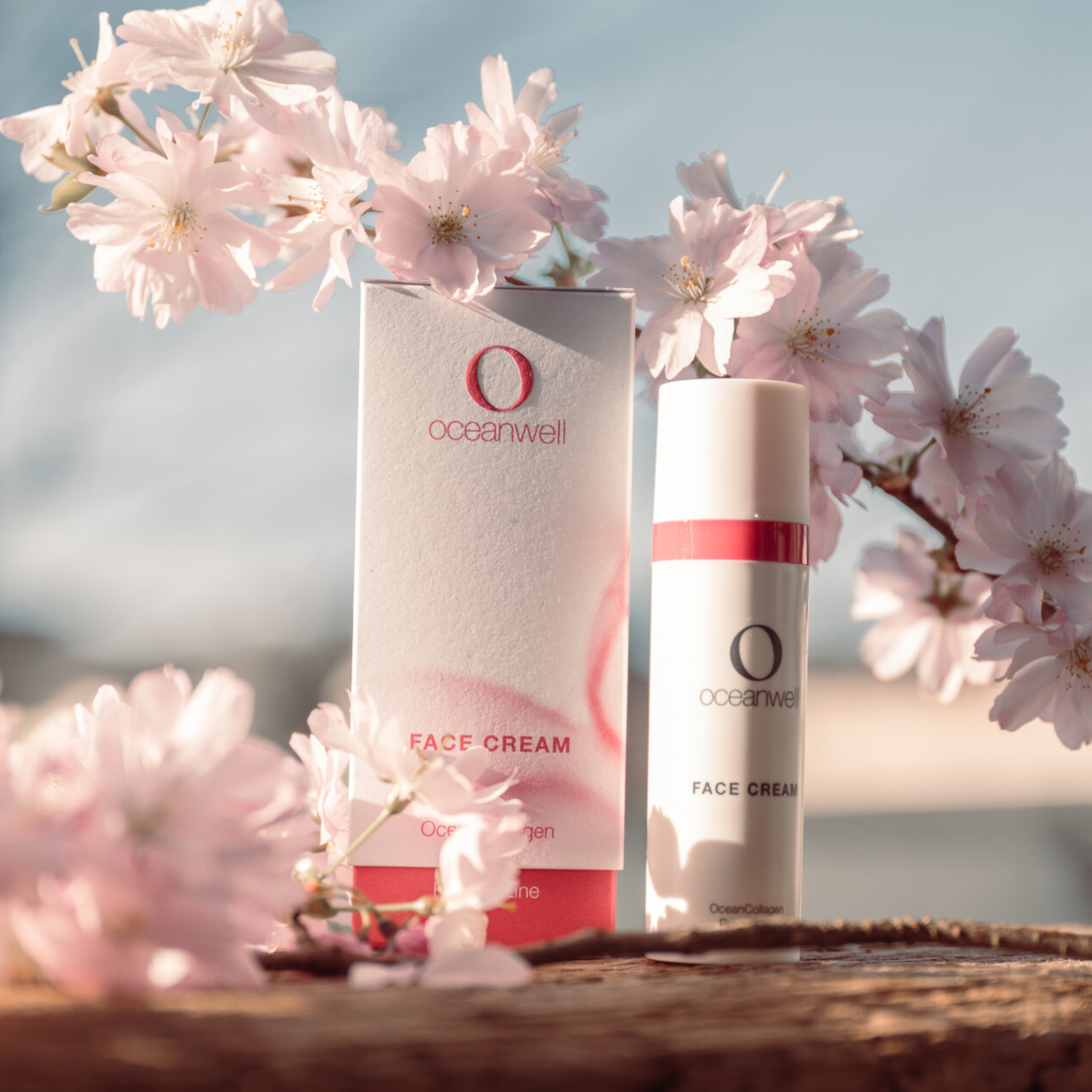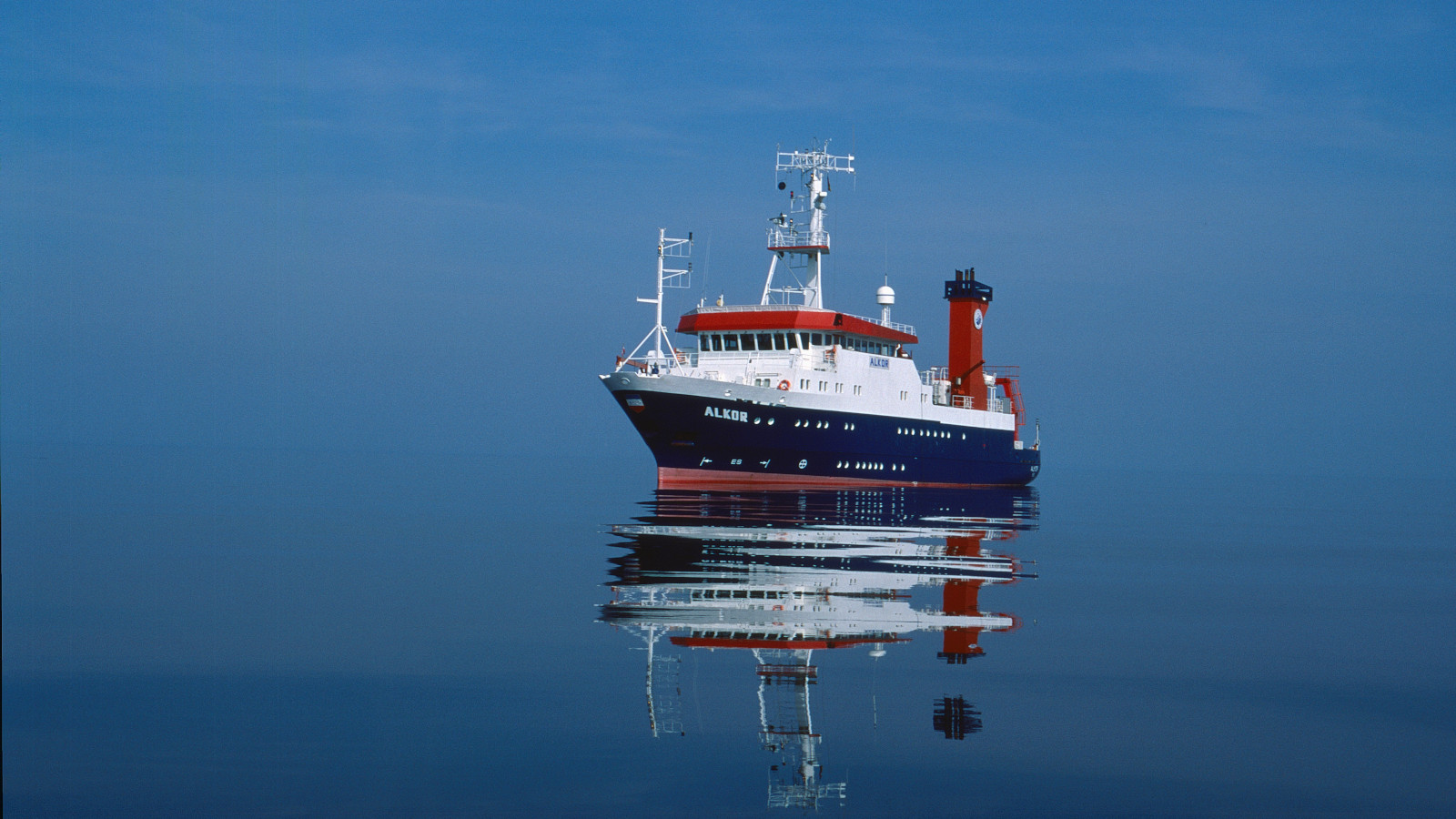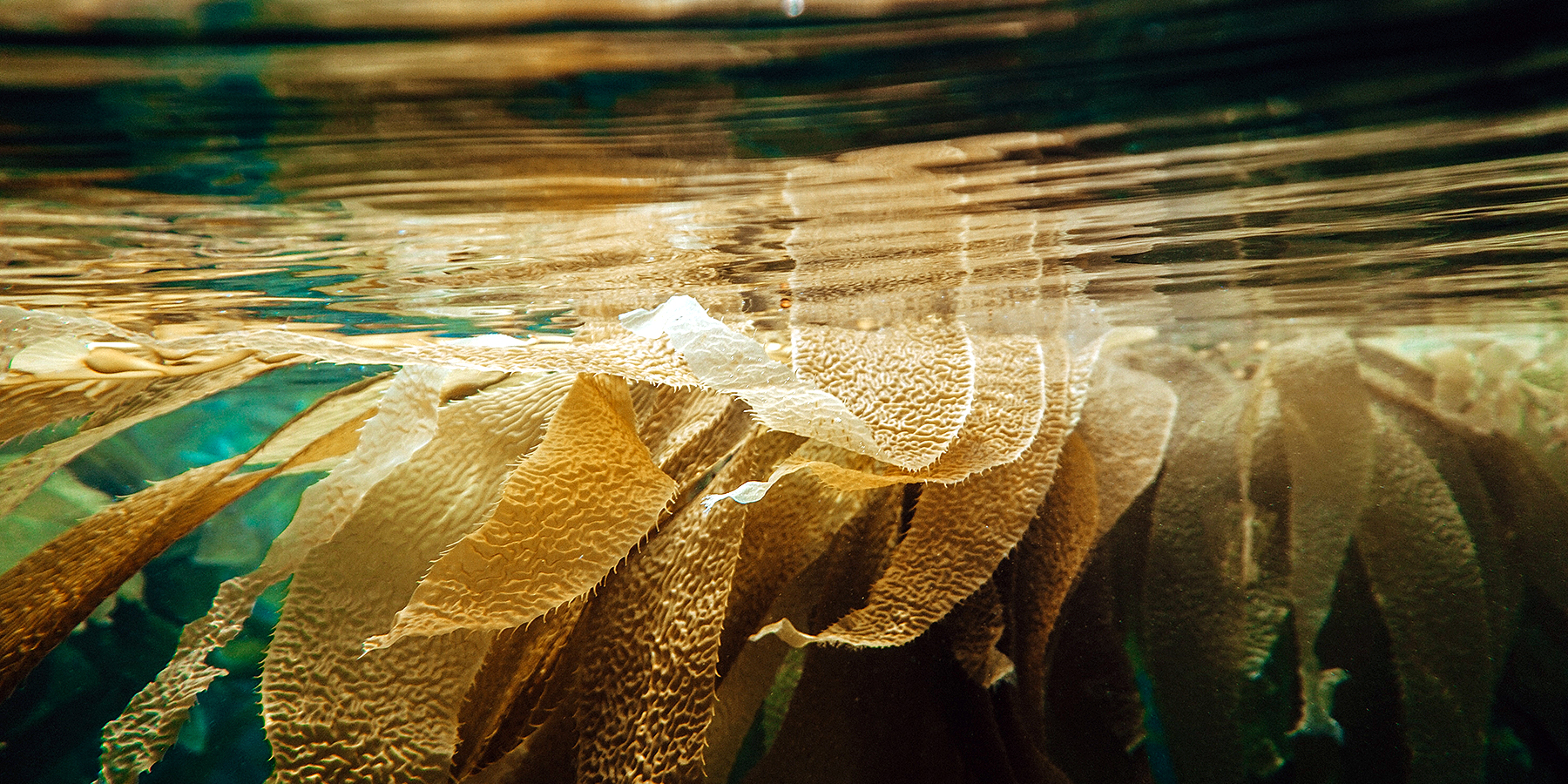
Natural cosmetics without compromise
without raw materials from petrochemicals (i.e. without mineral oils, paraffins, silicones)
without polyethylene glycol (PEG) and polypropylene glycol (PPG)
without parabens
without formaldehyde releasers
without synthetic fragrances and dyes
without microplastics and nanoparticles and
not tested on animals
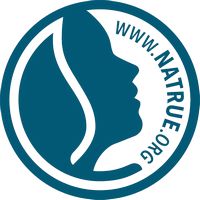
Your little energy package.
The Laminaria Alga
The Laminaria alga (Saccharina latissima) is one of the oldest living creatures in the world, and not without reason: the Laminaria alga, which lives in our North Sea and Baltic Sea, stores highly concentrated minerals and trace elements and forms a kind of protective shield against all harmful influences - such as UV radiation. It can also bind moisture extremely well - otherwise it would dry out at low tide. We use all these abilities for our products, because the Laminaria extracts are not only particularly pure, they are also refined very gently so that the effect can unfold optimally:
- As a radical scavenger - for cell renewal
- Antibacterial and stimulating - for a clear complexion
- As a provider of energy and moisture - for firm skin
- As a motor for the metabolism - vitalising and purifying
Laminaria algae are therefore the best ally against the ageing process of your skin. And also against cellulite.
By the way, Oceanwell contains between 5 and 10% laminaria extract, which is significantly higher than comparable products. In addition, there is a very high proportion of seawater, e.g. up to 50% in the Ocean Tonic, which ensures an optimal supply of trace elements and minerals.
The best thing about it: thanks to the sustainable cultivation of the Laminaria algae right here on the Baltic Sea coast off Kiel, we also protect the environment through short transport routes. And the sea anyway.
Mode of action
The trace elements from the Laminaria algae - especially the iodide - stimulate the metabolism, which is noticeable on the skin by a - sometimes visible - good blood circulation and is a positive sign for the effectiveness of your Oceanwell product.
This activation may cause some reddening of the skin. These are only short-lived and have absolutely nothing to do with an allergic reaction - otherwise a strong itching would occur and pustules would form on the treated skin area. The small reddening of the skin that may occur is only a sign that the blood circulation and thus the metabolism are stimulated - or in other words: the product unfolds its effect. The stimulated blood circulation brings new oxygen into the skin, waste products are more easily removed and skin regeneration improves. The nutrient depots of the often depleted cells are replenished and the skin's own protective mechanisms are strengthened - also in rosacea and couperose.
By strengthening the cell membranes and binding moisture at the same time, the overall appearance of the skin is sustainably improved. In other words, your complexion glows and you look refreshed, fresh and relaxed.
Refuel please.
Seawater and salts
- We only use fresh seawater from the Baltic Sea and no sea salt solutions.
- Cross-flow filtration with 0.2 µ filter size removes even nanoparticles and possibly bacteria from the water.
- Sea water has been scientifically proven to have soothing effects, e.g. on psoriasis and neurodermatitis.
Oceanic collagen.
The professional for wrinkles
Basically we know: Collagen, a protein, keeps connective tissue & co. elastic - but as we age, the body produces less and less of it. Conventional collagen is extracted from fish or bovine planzenta - which not only entails risks in terms of allergies, it is also not as "biocompatible" as Oceanwell's oceanic collagen.
Why?
The jellyfish from which we extract the collagen are very primitive organisms, their collagen has a much less differentiated structure than that of higher organisms such as fish or cows. This allows your skin to benefit much more from the benefits of collagen: It forms a "micro-fleece", a kind of protective shield on the skin, reduces the so-called transepidermal water loss (TEWL) and also binds an extraordinary amount of moisture. The gentle swelling of the upper skin layers also tightens wide-open pores.
The complexion appears finer and clearer. In addition, this microfilm fills in wrinkles. And since wrinkles are the result of a massive loss of moisture, the lasting preservation of moisture also results in fewer new wrinkles. Furthermore, the minerals and trace elements derived from the sea remineralise depleted skin cells, thereby restoring radiance to the complexion.
The jellyfish we use for OceanCollagen are so-called root mouth jellyfish (Scyphozoa). They consist of 98% seawater. Their water-binding collagen structures bind this high water content - which gives the jellyfish its elastic shape. Due to our gentle processing, the triple-twisted helical structure remains undamaged ("native") and thus retains its flexibility.
With the unique formulation of the OceanCollagen products, the collagen protective film can develop its moisturising effect optimally and in the long term - in principle like a depot in which the other marine ingredients (minerals, trace elements) can also have an optimal effect.
About 1 jellyfish is needed to produce 1 litre of our collagen. From which about 400 cream dispensers of 30 ml each can be produced. Thus, the demand for jellyfish is at a very low level. But what is particularly nice is that we have something to counteract the jellyfish bloom or "jellification of the seas".
Because due to climate change, the number of jellyfish in the sea is increasing, in some cases dramatically, which in turn is decimating fish stocks even more than they already are. So it's a pretty good combination of skin care and marine protection. Isn't it?
Here we give you some additional information about our ingredients:
INCI: Prunus Amygdalus Dulcis Oil
* This raw material comes from controlled organic cultivation
INCI: Gevuina Avellana Seed Oil
You can find an article on this ingredient in our Oceanblog (German):
Avellanaöl - Kostbare Pflege für anspruchsvolle Haut
INCI: Amber Powder
The natural amber comes from the coasts of the Baltic countries Estonia and Lithuania. It has not been chemically treated.
INCI:
Saccharomyces/Laminaria Saccharina Ferment
INCIs:
Cetyl Alcohol, Glyceryl Stearate
Components such as cetyl alcohol, glyceryl stearate or xanthan gum act as consistency agents (emollients) and stabilise the consistency. In contrast to conventional cosmetics with many consistency and colouring agents, natural cosmetics do without unnecessary additives.
INCI:
Glyceryl Stearate Citrate
To give the cream a pleasant texture, the watery and fatty components must be mixed at different temperatures in a homogenisation mixer (Becomix). In this process, the aqueous and fat components combine with the help of the emulsifier to form a milk, lotion or cream. A co-emulsifier (sodium stearoyl glutamate) stabilises the homogenisation in difficult formulations.
Einen Artikel zu diesem Inhaltsstoff findest Du in unserem Oceanblog:
Oceanwell Inhaltsstoffe: palmölfreier Emulgator
INCIs: Xanthan Gum, Sodium Alginate
Fat-free products must be thickened with gelling agents such as alginate (sodium alginate) or xanthan gum (xanthan gum). These substances also help to make a cream more supple. The alginate is obtained from brown algae of the North Atlantic, the xanthan gum is microbially produced by fermentation.
INCI: Hamamelis Virginiana Distillate (enthält Alcohol)
You can find an article on this ingredient in our Oceanblog (German):
Hamamelis - der Zaubernuss-Strauch
INCI:
Simmondsia Chinensis Oil
INCI:
Caprylic/Capric Triglyceride
INCI:
Soluble Collagen
Ozeanisches Kollagen polstert Fältchen auf und regeneriert die Haut
INCIs:
Cymbopogon Schoenanthus Oil (Lemongrasöl), Cinnamomum camphora (Hoholzöl)
INCIs:
Benzyl Alcohol, Benzoic Acid/ Sodium Benzoate, Sorbic Acid/ Potassium Sorbate
(enthäht Glycerin)
According to NATRUE guidelines, there are only a few approved preservatives which also occur in nature (8 substances + their salts). Sodium benzoate is found in cranberries and blueberries, for example, and potassium sorbate in rowan berries. Benzyl alcohol is also a natural component of fruits and is found in high concentrations in jasmine flowers. These preservatives require an acidic pH value for their germicidal effect, which is why almost all natural cosmetic products have a pH value of 5 - 6.
INCIs:
Coco-Glucoside, Glyceryl Oleate
INCI:
Palmaria Palmata Extract
- OceanCollagen Protecting Serum contains the aqueous extract.
- Palmaria Oil contains the Dulse macerate
INCI:
Oryzanol
Gamma-oryzanol is a natural phytosterol mixture from rice germs. It has a barrier-strengthening effect and stimulates the sebaceous glands.
INCI: Maris Limus
The fine sea sand in the Clarifying Scrub comes from Germany and is sieved and washed. Its edges are rounded so that no injuries to the skin can occur.
INCI:
Maris Aqua
You can find articles about sea water in our oceanblog (German):
Die Reinheit des Meerwassers
Spurenelemente für eine schöne Haut
INCI:
Sesamum Indicum Seed Oil
* This raw material comes from controlled organic cultivation
INCI:
Butyrospermum Parkii Butter
* * This raw material comes from controlled organic cultivation.
You can find an article abour Shea butter in our Oceanblog (German):
Nachhaltige Sheabutter macht Oceanwell hochwertig
INCIs:
Lauryl Glucoside, Decyl-Glucoside, Coco-Glucoside, Sodium Cocoyl Glutamate, Disodium Cocoyl Glutamate
Cleaning products that are rinsed off (so-called rinse-off products) usually contain surfactants. These are washing-active substances that - similar to an emulsifier - make fats water-soluble. They are usually based on vegetable oils and sugars.
There is more information in the Oceanblog
The ingredients are listed on cosmetic packaging as INCI (International Nomenclature of Cosmetic Ingredients). In the article "Was bedeuten die INCI auf den Kosmetikprodukten?" (German) you can find more information about Oceanwell's ingredients. We have also published separate articles on individual raw materials.
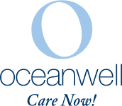
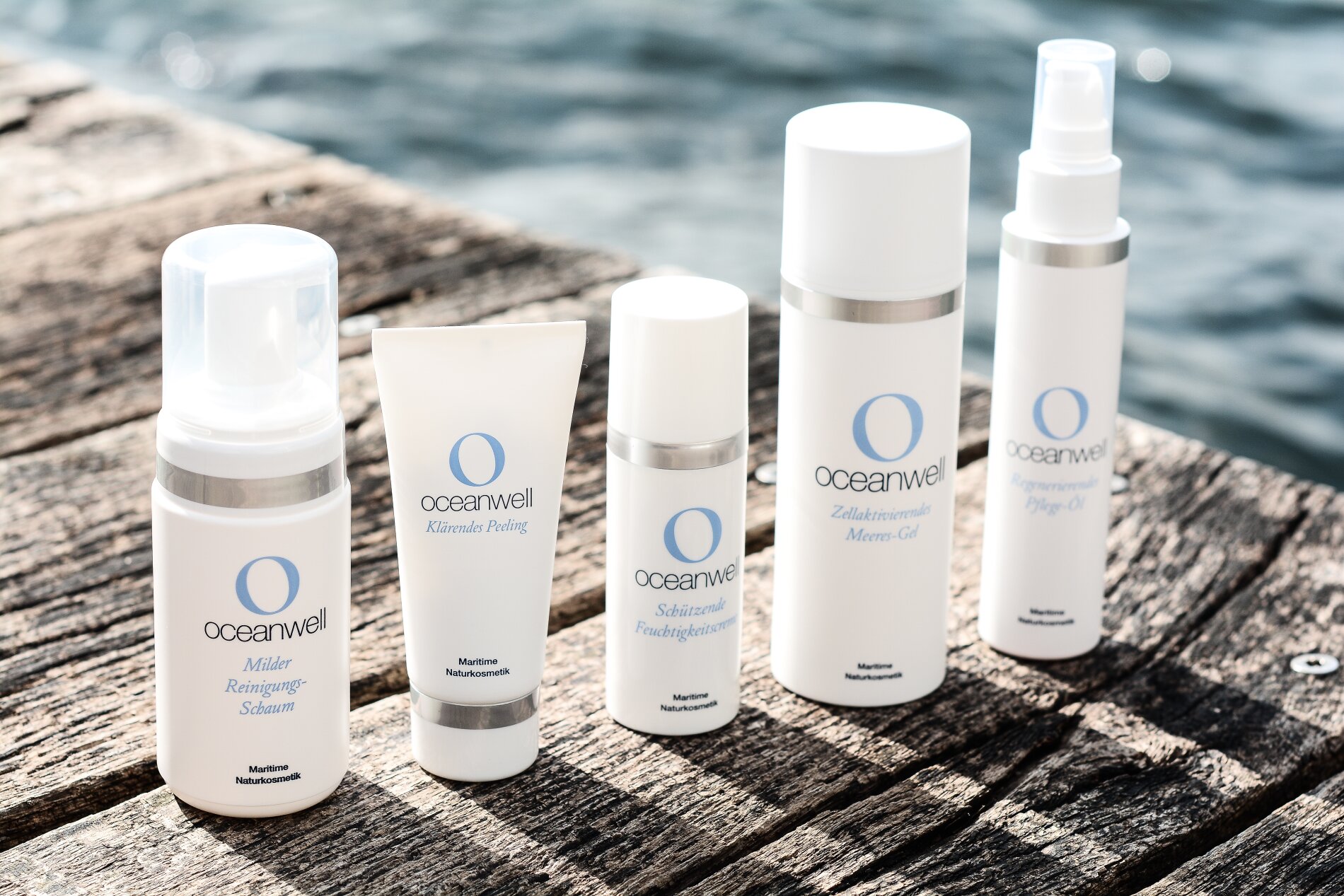
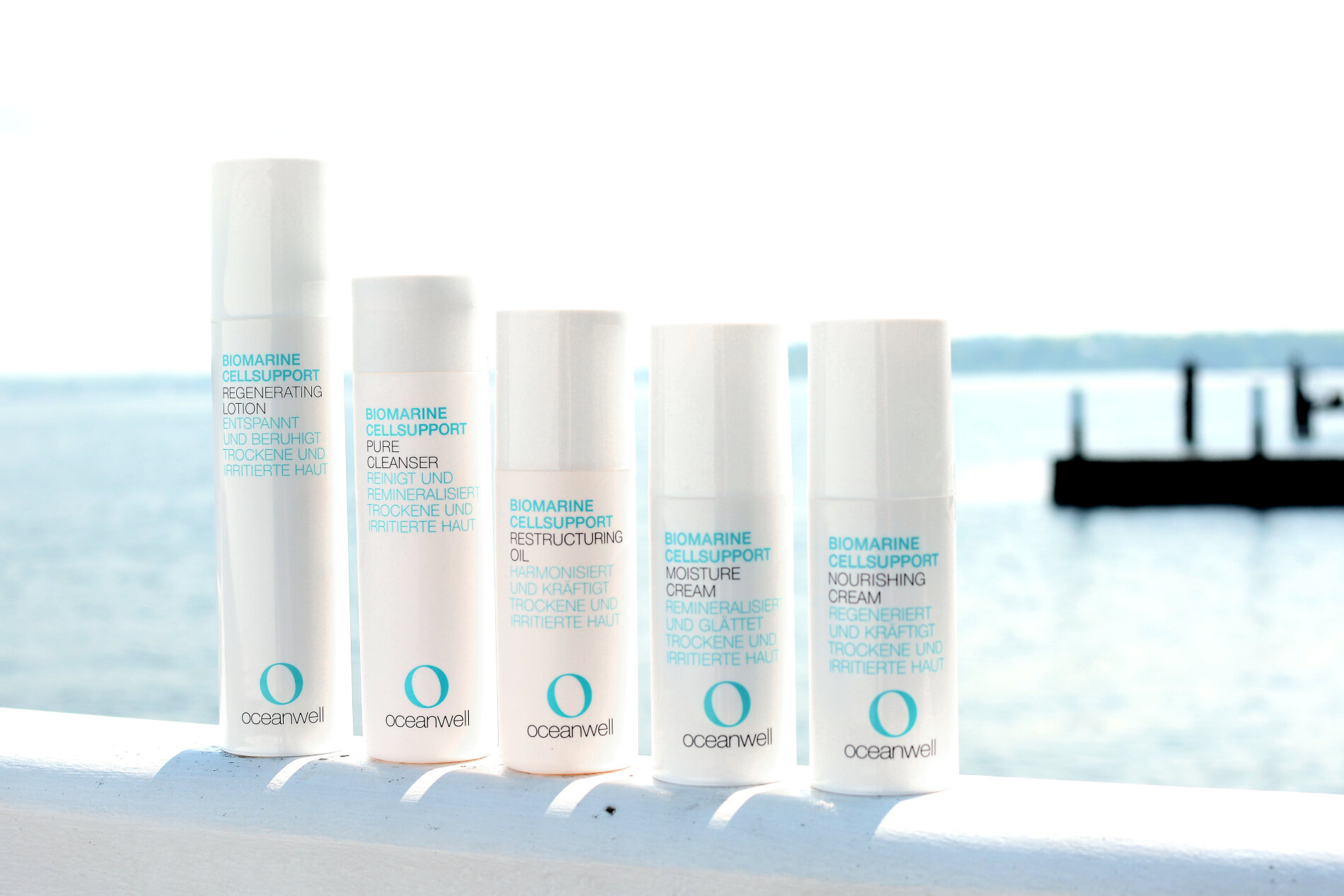
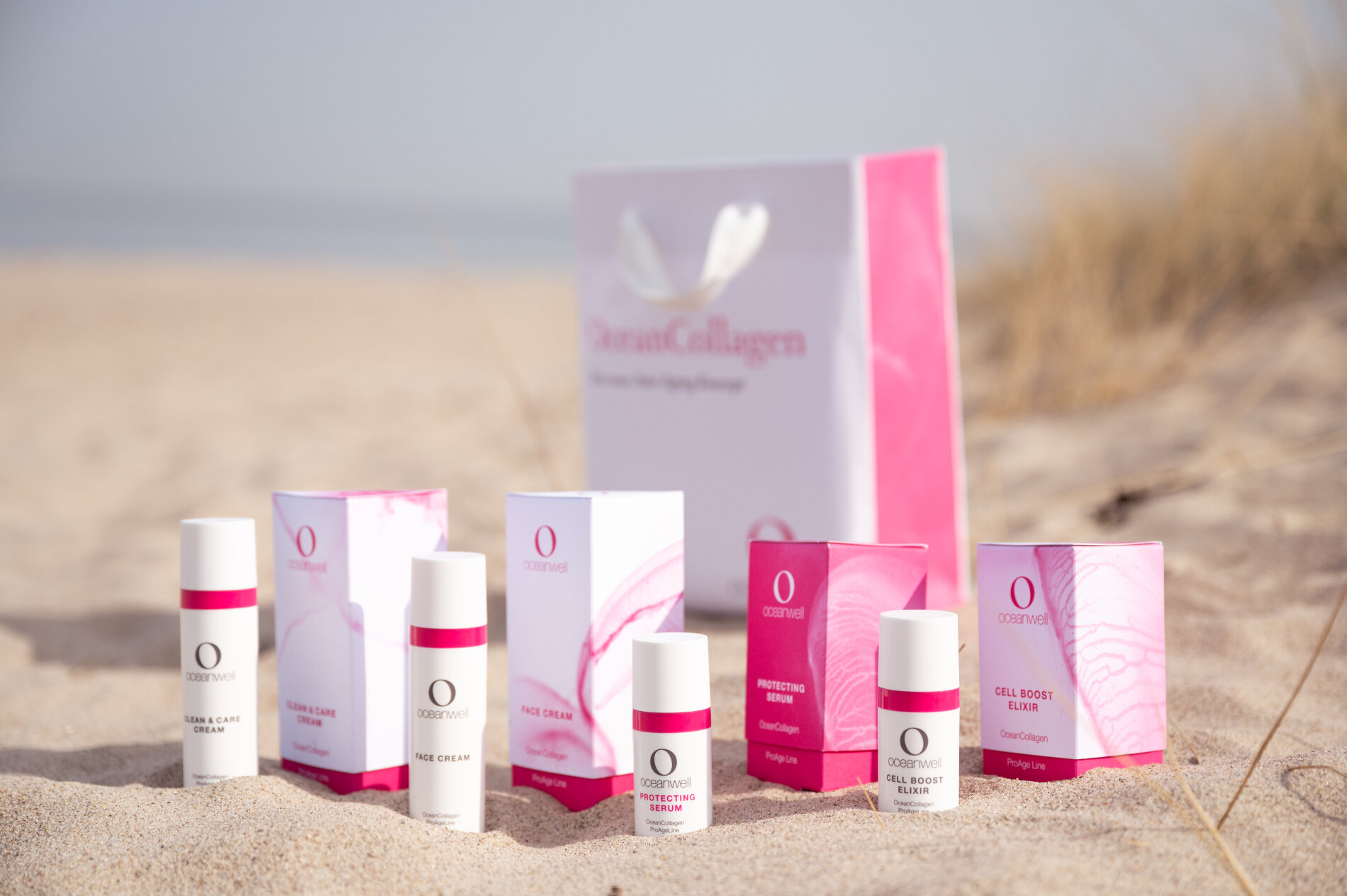
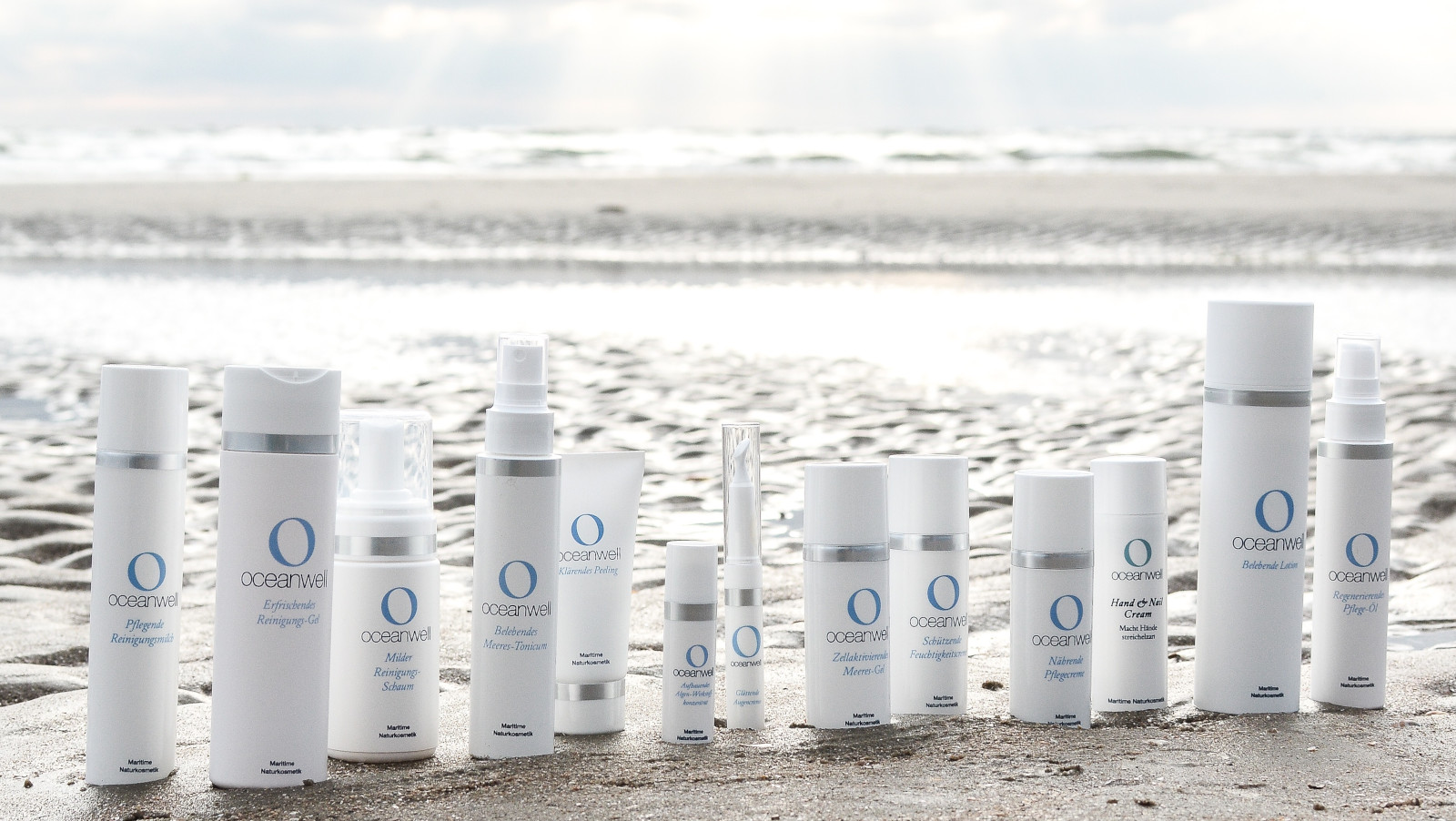
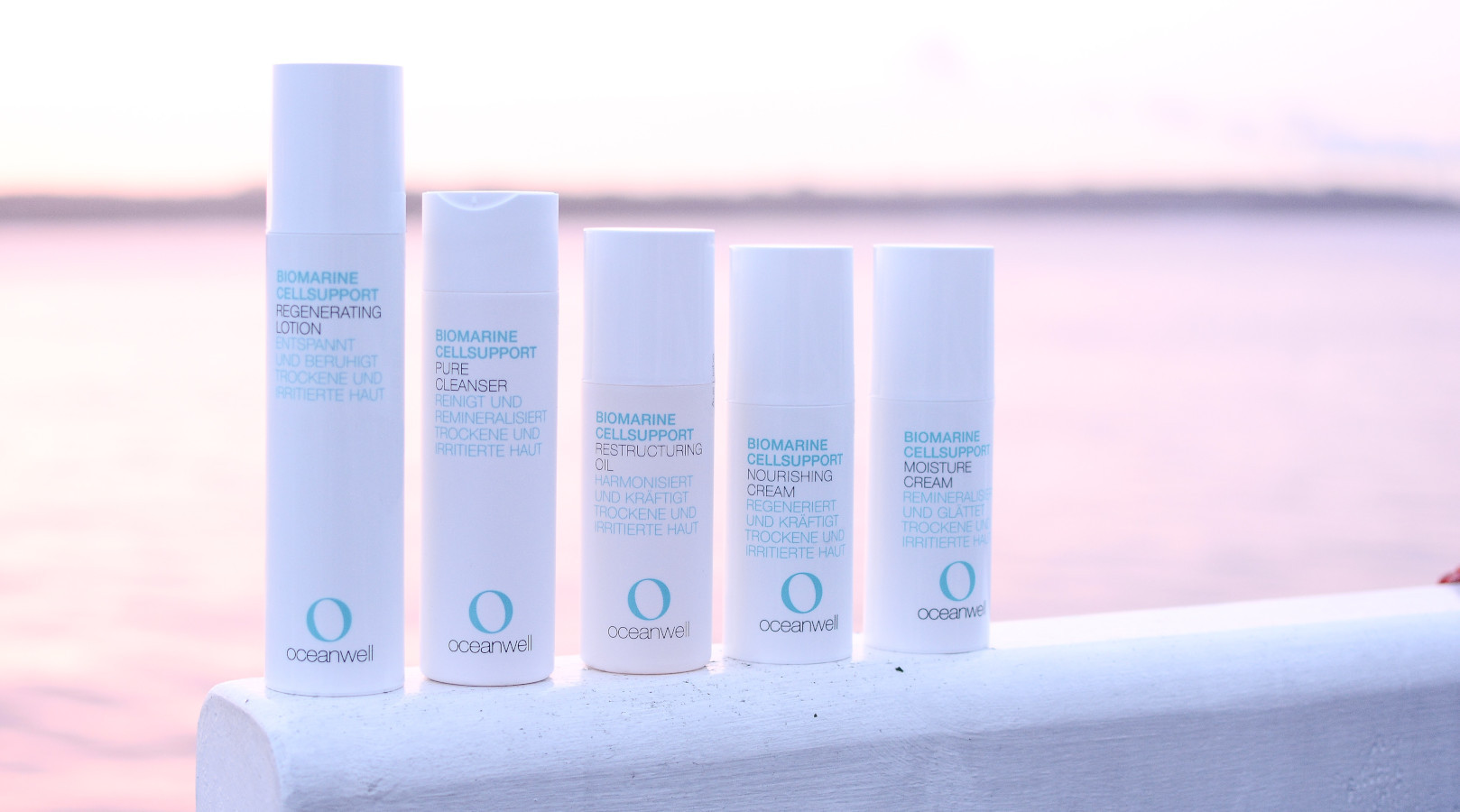
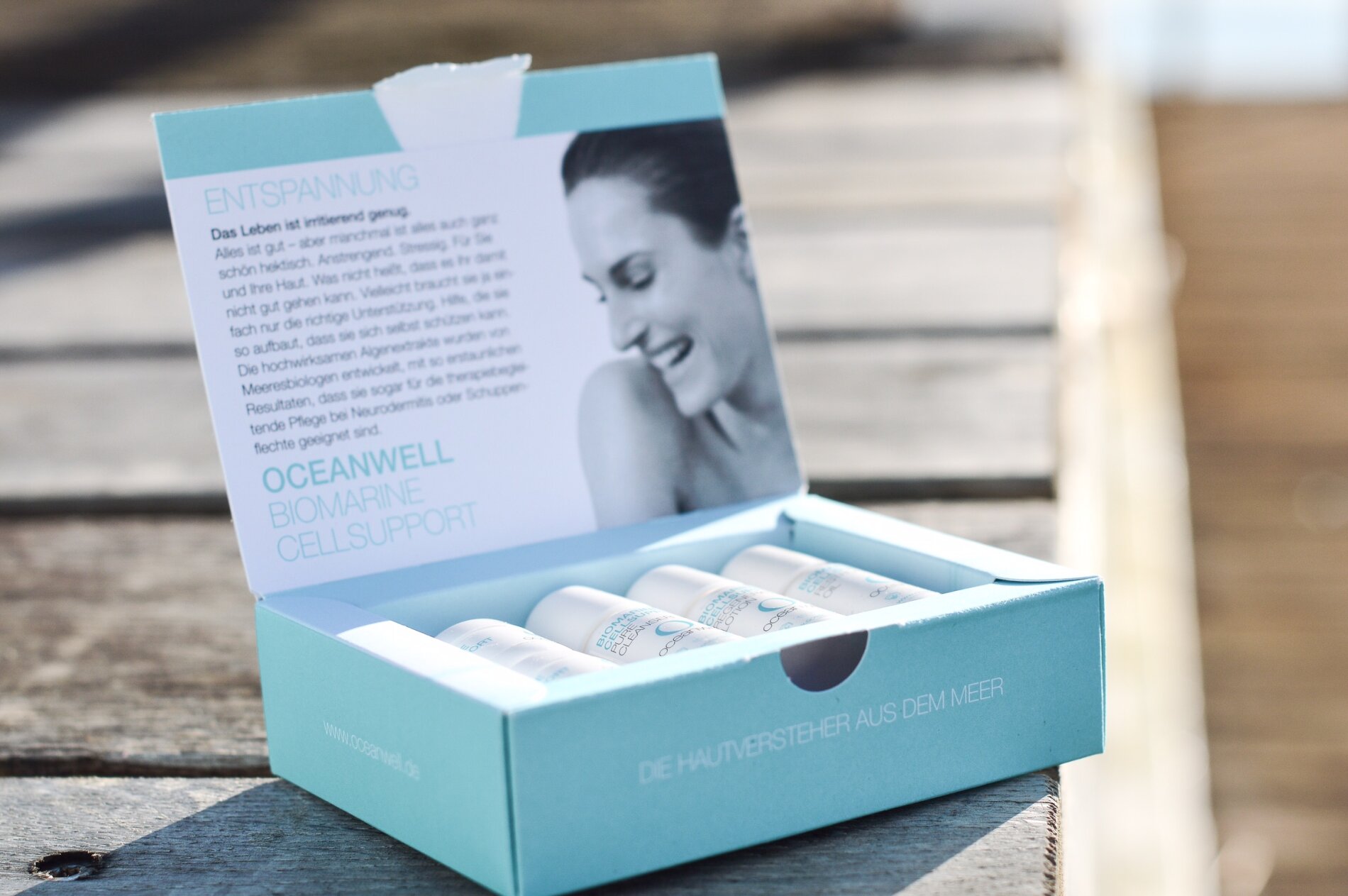
.jpeg)
